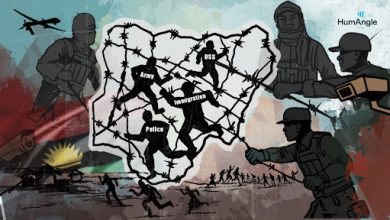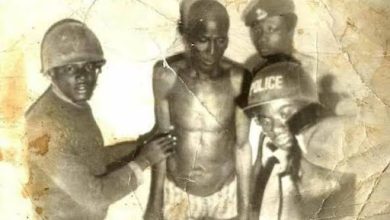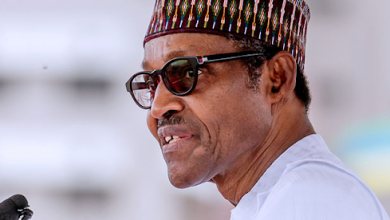Ogun Model Schools Lie Fallow, Abandoned, While Residents Lack Access To Education
In 2012 when the Ogun state government commenced a N27 billion project to construct model schools, it brought hope for the residents. 10 years after, Ijeoma Opara reports that the schools have been abandoned and left incomplete while children struggle to access qualitative education.
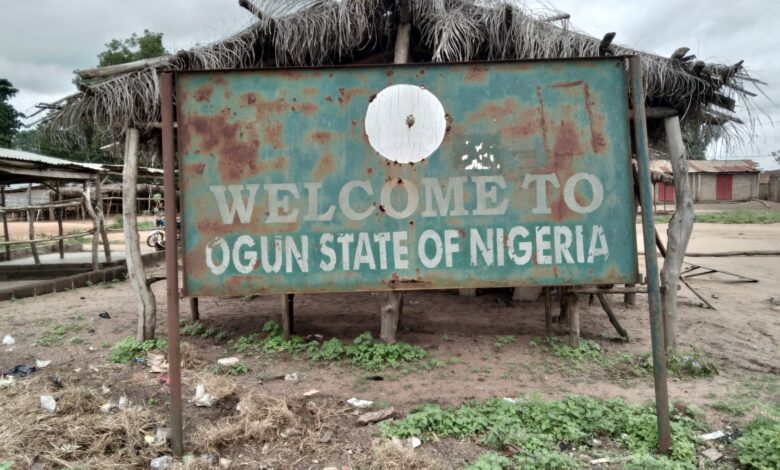
Ajoke Shonde, a mother of three and resident of the Agada community, Ipokia Local Government Area (LGA) of Ogun state, thought her first son would not need to walk a long distance to attend secondary school.
The government had commenced construction of a model school to be equipped with boarding facilities, and it was a glimmer of hope for residents of the community.
She had always dreamt that her son, Toye, would be one of the few in the community to attend the Model school a few kilometres away from Agada.
According to Shonde, Toye is one of the brightest pupils of the dilapidated Methodist Primary school in Agada. She believed he would get a scholarship into the model school when it was completed.
But Ajoke’s dream never came to reality because the model school was never completed.
Now in primary five, Toye will likely attend another dilapidated District High School located in other parts of the Ipokia LGA.
“It was painful that despite the publicity given to the project, it was never completed by the government. I have always thought my son would be one of the few to attend the school since he is brilliant. I know this our community is limiting his performance; he needs a better environment where he can showcase his talents.
“But since the government cannot complete the model school, he will also attend the secondary school, which is some kilometres away from here. Even though the building is also in bad shape, I was told he would learn there because it is better than here,” she said.
The Model school building located along the Owode-Idi-Iroko road was already in a dilapidated state. The ICIR observed that a part of the building had collapsed due to years of neglect.
It was gathered from the residents that the abandoned two-storey building structure had been taken over by criminals who reportedly use it for perpetrating crime within border communities.

The ICIR also observed that while a section of the building was almost at the roofing level, the other parts were abandoned halfway. A portion of the compound is now being used by some farmers to grow cassava and maize.
One of the farmers, Tokunbo Akanni, said the land belonged to his family but was given to the government because of the project’s expected impact on the community. He, however, expressed displeasure over the state of the building, describing it as a waste of state resources.
“I called two friends to let us use this compound for farming since the government has refused to complete the construction.
“My family gave this land to the government because we felt what they want to do will benefit us. Since they decided to waste state resources, it is better we use it for farming rather than leave this place turn to a hideout for criminals,” Akanni noted.
Residents of the community told The ICIR that the construction of the model school had commenced in 2014.
Like this community, many model schools constructed by the immediate past governor of Ogun state, Ibikunle Amosun, were abandoned, with some structures overgrown by bushes.
A start to failure
In 2012, the Ogun state government announced the commencement of 26 model schools to be built across 20 LGAS for the sum of N27 billion.
The flag-off for the construction began with the foundation laying ceremony of Ogun State Model Secondary School, Ilaro. This was done by former Governor Amosun during an occasion to mark his first anniversary as governor.
Amosun, at the event, said the model school projects were part of his commitment to restoring the glory of education in the state through providing affordable and qualitative education.
“Every child in Ogun will have the opportunity to get the best of education and compete with their friends anywhere,” Amosun had assured.
A week after the foundation laying ceremony, the former governor, speaking at an event in Abeokuta, boasted that the model schools would be provided with “unparalleled facilities in science, technical education, agriculture, humanities, enterprise, and sports, with full boarding facilities.”
Amosun added, “Just last week, we laid the foundations of 26 model schools that we believe will define the new Ogun standard in the provision of education at the secondary level.
“It is an ambitious educational programme, which will touch all of the 20 local government areas of the state. It is envisaged that these model schools will produce students who can compete with their peers anywhere in the world.”
Construction of the projects had kicked off the same year. Although the former governor said the model school projects would be completed by 2013, The ICIR tracked many of them across the three senatorial districts in the state and found that they are now in ruins.
Model schools lie fallow, looted and abandoned
The model school in the Idi-Aba area of Abeokuta is a few meters from the Federal Medical Centre. The residents claimed the construction of the project commenced in 2013, but the project had become a home for criminals.
Although the multi-million naira three-storey building has been taken over by thick bushes, the building without a roof and windows has now become a toilet for residents who defecate within the premises. It is difficult to gain access to the building because of the thick bushes that have grown around it.
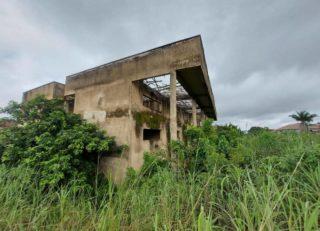
“It should be one of the best school structures built by the government but Amosun started it, and Abiodun abandoned it,” a resident, Aishat Olatoye, said.
According to her, many of the materials left on the site have been carted away by people.
“People have looted all the materials left onsite since it appears that the workers will not continue work anytime soon,” she stressed.
One of the community leaders and wife of the Baale of Idi-Aba lamented that if the school had been completed and functioning, it would have added to economic activities in the area.
She said although there are schools miles away from the area, they are not enough. She noted that the residents are yearning for its completion, adding that they are not happy it was abandoned.
“We are praying for intervention from anyone just to complete the building,” she added.
The Model School in Ilaro is located on the outskirt of the town along the Owode-Ilaro road. From the outside, it appeared completed, but it was discovered that many of the rooms were dilapidated, with no ceiling in most of the rooms.

Building materials, including ceiling boards, burglary, and tiles, littered the building. Meanwhile, the more significant part of the compound has been taken over by a construction company identified as Rajicom construction, as the equipment used by the company littered the compound.
A security operative working within the building was available during the visit.
The ICIR gathered that some workers resided in the rooms of the abandoned building, and clothes were hanging from some windows to indicate this.
A food vendor opposite the building, Tola Olajuwon, told The ICIR that the government stopped working in the building in 2018.
Olajuwon hinted that some workers of the construction company who live in the building had looted some of the materials left there.
“Abandoning such an edifice here is not reasonable; the people living there are stealing the materials and selling them at cheaper prices. The government needs to do something to this building so that it can be useful for the people of the community,” she said.
Overtaken by weed
The Isara Remo building of the proposed Model School is located along Isara – Ago – Iwoye road, far away from the town.
The ICIR observed the derelict state some metres away for fear of insecurity. It was a similar situation with the Adeoye Lambo Model school, wasting away in a remote area of the Onijanganjangan community, Abeokuta North LGA.

Akinola Saheed owns an office in the area. He said relocating to the area would have been an option, assuming there were social amenities, especially schools for children.
“There are schools but it’s quite far for kids going from here. It would have been better if the abandoned school was functioning,” he stated.
The government school built from public funds is sitting abandoned on a large expanse of land. Bushes dominated the fence and compound, and while the school had been painted, the green and white colours are fading fast.
Ogun model schools cost N1.2bn each
In the twilight of his administration, Amosun told journalists at Isheri that each project costs between N750 million and N820 million. He added that with the furniture and other equipment, each of the projects stands at N1.2bn.
Also, the former commissioner for education in the state, Segun Odubela, in a May 2012 edition of a monthly publication, Ogun Update, puts the cost of each of the proposed Model School projects at N1.05bn, comprising construction, supply of equipment and furniture.
Several efforts to get the actual amount of money disbursed for the projects were unsuccessful as the state government refused to give details about it. Public analyst, Kunle Somorin, described the construction of a model school by past administration as a waste of resources. Somorin noted that the money used to construct the model schools should have been used to renovate dilapidated schools across the state.
“It is wasteful on the part of the last government to say they want to embark on construction of model schools when such money can be easily spent on other things.”
Beyond the sad state of the model schools, many other public schools remain in shambles across the state. A visit to some public schools showed that many were still in poor conditions, with dilapidated structures and poor surroundings.
The conditions of some community primary and secondary schools in the Ipokia Local Government Area of the state pose severe risks to the pupils and teachers and also serve as a distraction. Most of the buildings are without roofs. Students often scamper for shelter when it rains. Our correspondent also observed that flooding had affected some schools.
During a visit to the District High school and Methodist Primary school in Ipokia Local Government, they were observed to lack basic facilities and qualified teachers.
The District High school opposite the Ipokia Local Government secretariat had classrooms in bad shape, some of which had leaking roofs, while students learned under in others without ceilings.
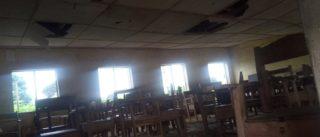
Some students lamented the overcrowded classrooms and how it has made it difficult for them to learn in such conditions.
A student identified as Faridat Sholagbade said, “We always pay N300 for a chair every time, but we still don’t have enough chairs in our classrooms.
“We are too many in a class and this has made learning difficult for many of us.”
At the Methodist primary school, Agada, the residents complained that when it rains, flood always takes over the compound sending the pupils, teachers and the principal out of their classes and offices.
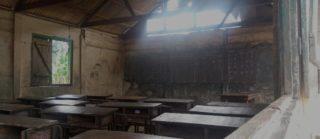
It was also gathered that there are not enough teachers and chairs in the schools. Many of the buildings were old and looked ready to collapse. The toilet building had also been turned into a dump site, and faeces littered the environment.
Nurudeen Laoye, a community leader in Agada, lamented that the community had been neglected because it is on the outskirts of the state.
Laoye, the Chairman of the Agada Community Development Association, said the community lacks access to good healthcare facilities and proper education.
“They send our children home when it is about to rain because of the leaking roof and the dilapidated state of the school. This is the only school in our community; to get to another school, you will need to trek for about three hours.
“Many of the teachers don’t want to stay here because this place is not developed and it is also far from Idi-iroko,” he noted.
No plans to complete schools – Ogun government
When The ICIR reached out to the Ogun State Commissioner for Education, Abayomi Arigbagbu, he said there were no plans to complete the model schools.
“The buildings were not ready. They were never completed. There are no plans to complete those structures. At least not now, because the money that is required to do this is enough for us to do what we think we want to do in education.
“There are still outstanding debts on it, so we cannot start doing that without trying to make sure we do something about the existing schools,” Arigbagbu said.
He said the model schools were a project of the past administration and not the vision of the current administration. Arigbagbu further argued that although it belongs to the Ogun state government, the current administration had no plans to pay the debts owed to the contractors.
“We are building classrooms. We have 1000 projects; we are going to start another 1000. We have classrooms for students. But the thing is that those were supposed to be model colleges.
“With the concept, they are supposed to be special schools, but that is not the type of school we are referring to. For us, we have what we call flagship schools, which is working on existing schools to make them into models. We are not building models from scratch because it will cost a lot of money. If I have N27billion now, I will turn around education in Ogun state. And that was for just 26 schools, and it was not completed.
“So it will be very difficult when you come in like that to start with that type of thing. You have your own difference, and you want to actually work on that. A real assessment will have to be done to know the needs,” he said.
He, however, could not provide the amount spent by the previous administration on the projects or how much was being owed to contractors.
“I don’t know about that. It is not something I am bothering myself about, you know we have a lot of things that are our concern now. So I don’t know,” he said.
With no plans of completion in sight, the buildings sit in their ruins, a constant reminder of state failure, unkept promises and wasted funds.
This report is part of a collaborative investigative series by HumAngle, the International Centre for Investigative Reporting (ICIR), NPO Reports and TheCable, facilitated by the Wole Soyinka Centre for Investigative Journalism (WSCIJ) under its Collaborative Media Engagement for Development, Inclusivity and Accountability (CMEDIA) project, with support from the John D. and Catherine T. MacArthur Foundation.
Support Our Journalism
There are millions of ordinary people affected by conflict in Africa whose stories are missing in the mainstream media. HumAngle is determined to tell those challenging and under-reported stories, hoping that the people impacted by these conflicts will find the safety and security they deserve.
To ensure that we continue to provide public service coverage, we have a small favour to ask you. We want you to be part of our journalistic endeavour by contributing a token to us.
Your donation will further promote a robust, free, and independent media.
Donate HereStay Closer To The Stories That Matter

